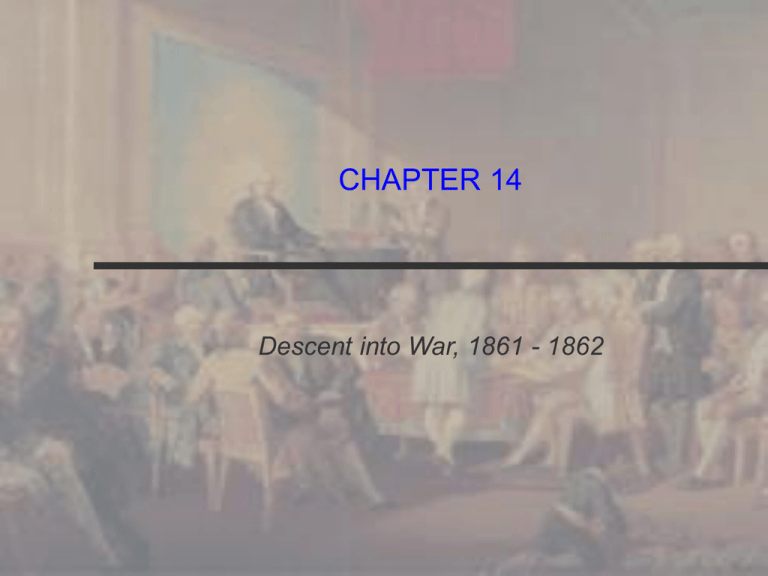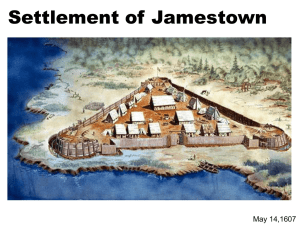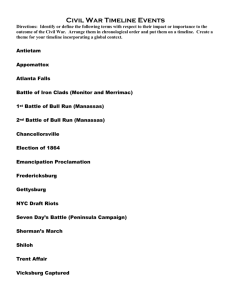CHAPTER 14
advertisement

CHAPTER 14 Descent into War, 1861 - 1862 Chapter Review Describe the initial responses in the North and South to the outbreak of Civil War. Describe the military advantages and disadvantages of the North and South at the beginning of the war. Describe the various roles of women on both sides during the Civil War. Describe the role played by the navies on both sides of the Civil War. Explain why the Battle of Antietam is considered a turning point in the Civil War. I. War Begins: April 1861 to July 1861 Lincoln calls for troops to quell “rebellion” States make decision on secession North appears to hold advantage, but South is confident of victory Strategy for South is to fight defensively, while North wants to capture Mississippi River Neither side has clear advantage in leaders First conflicts small as both sides gather armies Bull Run (Manassas Junction) first real battle, with surprising victory for South Women participate in war from earliest days Southern Secession ©2004 Wadsworth, a division of Thomson Learning, Inc. Thomson Learning™ is a trademark used herein under license. Battle of Bull Run (Manassas), July 21, 1861 II. War Takes Command: August 1861 to March 1862 McClellan and Frémont fail to please Lincoln as generals War takes tremendous toll from beginning on economy and homefront Northern blockade is effective against South Trent Affair cuts short southern attempt to get foreign help Union General Grant seizes western forts and city of Nashville Both sides experiment with “iron-clads” and North has more success Campaigns in the West ©2004 Wadsworth, a division of Thomson Learning, Inc. Thomson Learning™ is a trademark used herein under license. III. The Union on the Offensive: March to September 1862 With McClellan stalling, Union troops at Shiloh, Tennessee, win victory over South New Orleans falls to Union troops Confederates resort to conscription Seven Days’ Battles take heavy toll but bring no clear victory Slavery becomes more central issue Union troops accept runaway slaves as “contrabands” Lincoln begins to plan his Emancipation Proclamation South wins second Battle of Manassas but sustains great losses at Antietam – Emancipation Proclamation By end of 1862, stalemate in effect Battle of Shiloh, April 6-7, 1862 Peninsula Campaign, 1862 ©2004 Wadsworth, a division of Thomson Learning, Inc. Thomson Learning™ is a trademark used herein under license. Campaigns in Virginia and Maryland, 1862 ©2004 Wadsworth, a division of Thomson Learning, Inc. Thomson Learning™ is a trademark used herein under license. Concepts Confederacy, Jefferson Davis, Robert E. Lee Anaconda Plan Dorothea Dix George McClellan, “Stonewall” Jackson, Ulysses S. Grant Blockade runners, Trent affair Vicksburg Monitor and Virginia Contrabands Copperheads Antietam, Emancipation Proclamation Lee’s Invasion of Maryland, 1862; Battle of Antietam, Sept. 17, 1862




